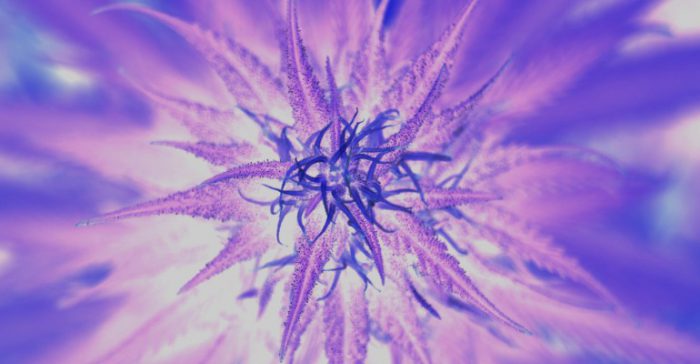Todd Winner for Zondits. January 12, 2016. Image credit: fotobias
The retail marijuana market is booming. Among the 23 states that have legalized cannabis for medicinal purposes, as well as the 4 states (and Washington D.C.) that have legalized cannabis for recreational use, the demand is rising. And with other states currently looking to legalize cannabis for either recreational or medicinal purposes, the trend shows no signs of slowing down.
- 833 retail and 1,416 medical establishments
- 148,238 lbs medical and retail marijuana sold
- $700 million in sales in 2014, expected to reach $1 billion in 2016[note]https://www.washingtonpost.com/news/wonk/wp/2015/02/12/colorados-legal-weed-market-700-million-in-sales-last-year-1-billion-by-2016/[/note]
- 214 stores licensed for operation
- Approximately $940 million in sales in 2015
- $10.8 million sold in first 6 days cannabis was legal for recreational use
With increasing demand comes the need for supply. And as the market for cannabis slowly makes its way out of the shadows, high-tech operations are being set up in order to maximize product quality and yield.
Growing plants indoors, regardless of the variety, is typically an energy intensive process. Special consideration must be made to the type of lights used, including their operating schedule, light output, and spectrum. Additionally, HVAC systems must be designed to ensure that the environment remains ideal for plant growth, namely maintaining the required temperature and ensuring proper air flow and ventilation.
Figure 1. Indoor Cannabis Production Energy Consumption by End Use

The presence of these technologies in grow operations presents the opportunity for substantial energy savings through the use of energy efficient products and by establishing efficient system operations.
Lighting – PAR vs. Lumens
Conventional lighting applications must take into account the amount of light hitting a surface such as a desk or the floor. For example, an industrial manufacturing facility must be sure there is enough light at a given workstation in order for the employee to safely and accurately complete the task at hand. The use of metrics such as lumens, candelas, and foot-candles are all a means of understanding how much light a fixture or lamp generates, and how much the surface in question will be illuminated.
Using lights in indoor growing operations creates new challenges and metrics that must be considered. For these applications, the amount of light is less of a priority as is the type of light reaching the plant. Specifically, light in specific wavelengths is needed to promote growth and flowering, where light in the remaining wavelengths is simply not necessary.
Photo 1. Example of Blue/Red Spectrum Emitted Using LED Fixtures

Plant biologists define light in the 400 nm to 700 nm spectral region as “photosynthetically active radiation,” or PAR. The unit for measuring PAR, micro-mols per second (μmol/s), indicates how many photons in this spectral range fall on the plant each second.[note]Source: http://www.lumigrow.com/demystifying-lumens-lux-par/[/note]
Specifically, light in the red and blue spectrum is essential for promoting growth and flowering, as well as overall plant structural strength. This corresponds to wavelengths of approximately 660 nm (red) and 439 nm (blue).
Benefits of LED
LED fixtures used for growing operations present many benefits compared to incumbent technologies. Some of these benefits include the following:
Energy efficiency: LED lights are much more energy efficient than incandescent, HID, or fluorescent technologies. Approximately 90% of the lights currently used for marijuana cultivation are high-intensity discharge (HID) fixtures. The widespread presence of this technology presents an enormous opportunity, where LEDs are capable of similar productivity at up to a 75% reduction in energy use.
Targeted wavelengths: LED fixtures can be designed with targeted wavelength options that can be optimized for the flowering and vegetative stages of a plant’s growth cycle. While high wattage HID lamps are required in order to get the optimal amount of light in the required wavelengths, LEDs can be designed to eliminate light in unnecessary wavelengths, thereby avoiding wasted energy.
Figure 2. Light Spectrum and Plant Growth
Increased lifetime: LEDs have a long lifetime as compared to HID, incandescent, or even fluorescent lamps. This results in reduced maintenance costs as lamps need to be replaced less frequently.
Less heat, more light: LED lights generate less heat compared to incumbent technologies, thereby reducing the cooling energy required to maintain an optimal growing environment. For growing operations that require heating, efficient heating technologies can be selected instead of relying on the radiant heat emitted by incumbent light sources.
Controllability: LED fixtures have the unique ability to be highly controllable. It is hypothesized that adjusting the amount of light emitted by an LED fixture throughout the growth cycle of a plant may have positive effects on yield.
LED Grow Lighting Research Initiatives
While LEDs are a promising technology for growing plants in indoor facilities, research into this field continues and is necessary for businesses and consumers to make informed decisions. For example, Purdue University recently completed a study confirming that targeting plants with red and blue light was effective in promoting growth while reducing energy use.
Additionally, the Lighting Research Center at Rensselaer Polytechnic Institute recently launched a plant physiology lighting program to expand research on the effects of artificial light sources on the development of plants.
Finally, the American Society of Agricultural and Biological Engineers, in partnership with the DesignLights Consortium, has developed a committee to complete further studies into this unique lighting application and its potential benefits.

